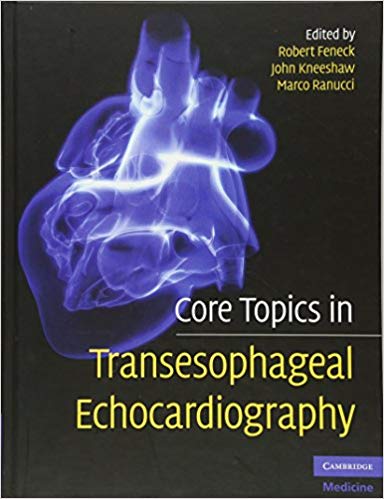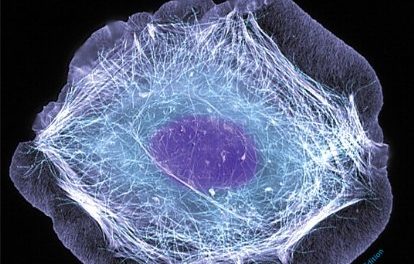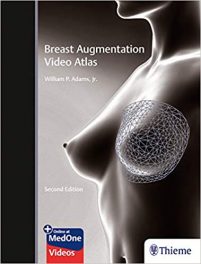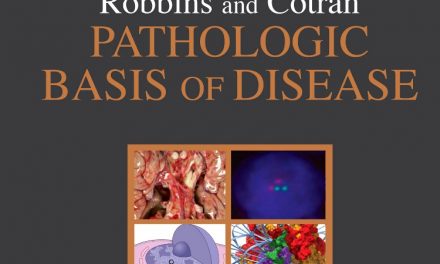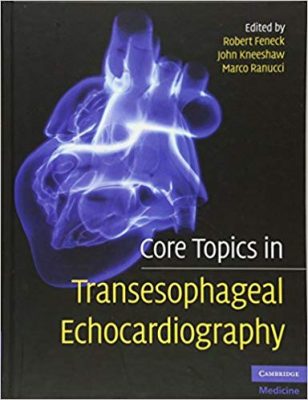 Editors: Robert Feneck, John Kneeshaw, and Marco Ranucci
Editors: Robert Feneck, John Kneeshaw, and Marco Ranucci
Publisher: Cambridge University Press – 416 pages
Book Review by: Nano Khilnani
The editors report that in the last 10 years there has been a substantial increase in the use of transesophageal echocardiography. This means for 20 years (today we are in 2020), and this book was published in 2010. Many of the TEEs have been due to more patients undergoing cardiac surgery, as well as major non-cardiac surgery.
Today, TEE training is part of the fundamental process of acquiring knowledge and skills for aspiring and established cardiologists, as well as for cardiac anesthesiologists, intensivists, and all those who care for patients who undergo cardiac surgery, this book’s editors Drs. Feneck, Kneeshaw, and Ranucci point out in the Preface.
Much of the content is based on questions the editors received from colleagues. All the contents of this book are organized around two sections. While the second section contains chapters meant primarily for established practitioners, and the first section mainly for trainees, no such restriction has been imposed, and you are free to learn from both sections.
Twenty-eight specialists in anesthesia, cardiology, and related medical specialties (treating both adult and pediatric patients) from seven countries –Austria, Belgium, Denmark, Germany, Italy, Switzerland, and the United Kingdom, – authored the 24 chapters of this book, listed below:
- Section 1 – Fundamentals of transesophageal echocardiography (TEE)
- Introduction: indications, training, and accreditation in transesophageal echocardiography
- Basic principles of physics in echocardiographic imaging and Doppler techniques
- Safety and complications; probe maintenance
- The transesophageal echo examination
- Normal valves
- Aortic valve disease
- Mitral valve disease
- The tricuspid valve, pulmonary valve, pulmonary artery
- Left ventricle systolic and diastolic function
- The right ventricle
- Cardiac masses and pericardial disease
- The thoracic aorta
- Hemodynamic assessment
- Section 2 – Practical issues in transesophageal echocardiography
- Ischemic heart disease
- Cardiomyopathies
- Mitral valve repair
- Aortic valve surgery
- Infective endocarditis
- Prosthetic valves
- Adult congenital heart disease: TEE guidance of interventional catheter-delivered device
- Critical and emergency care
- Three-dimensional imaging
- Recent developments in Doppler imaging
- Transesophageal echocardiography reporting
As we sometimes do, we take looks at the contents of chosen chapters by providing outlines of the topics discussed within them. For this book, let’s take a look at the 18 pages of chapter 17 entitled Aortic Valve Surgery authored by Justian Swabevelder and Alison Parnell:
- Introduction
- Pre-bypass
- Post-bypass
- Role of TEE in surgical decision making: specific procedures
- Conclusion
In this chapter, after discussion of the Conclusion by the two authors named above, two other chapter authors – Joerg Ender and Chirojit Mukherjee – discuss Transcatheter Aortic Valve Implantation and also provide details. Here below is the outline:
Transcatheter Aortic Valve Implantation
- Introduction
- Surgical procedure
- Echocardiographic implications
- Postoperative monitoring
- Real-time £D TEE for transcatheter valve implantation
- Limitations of TEE and general considerations
- Conclusion
The chapter ends with the provision of 68 sources of information under the heading References.
As with other medical topics, we found only a small number of books – just 145 – listed on Amazon.com on topic of ‘transesophageal echocardiography’. So we are indeed very pleased to present this review of Core Topics in Transesophageal Echocardiography (TEE)
Editors:
Robert Feneck is Consultant Anesthetist at St. Thomas Hospital in London, UK.
John Kneeshaw is Consultant in Cardiothoracic Anesthesia and intensive Care at Papworth Hospital in Cambridge, UK.
Marco Ranucci is Director of Clinical Research in the Department of Anesthesia and Intensive Care at IRCCS Policlinico in San Donato, Italy.

